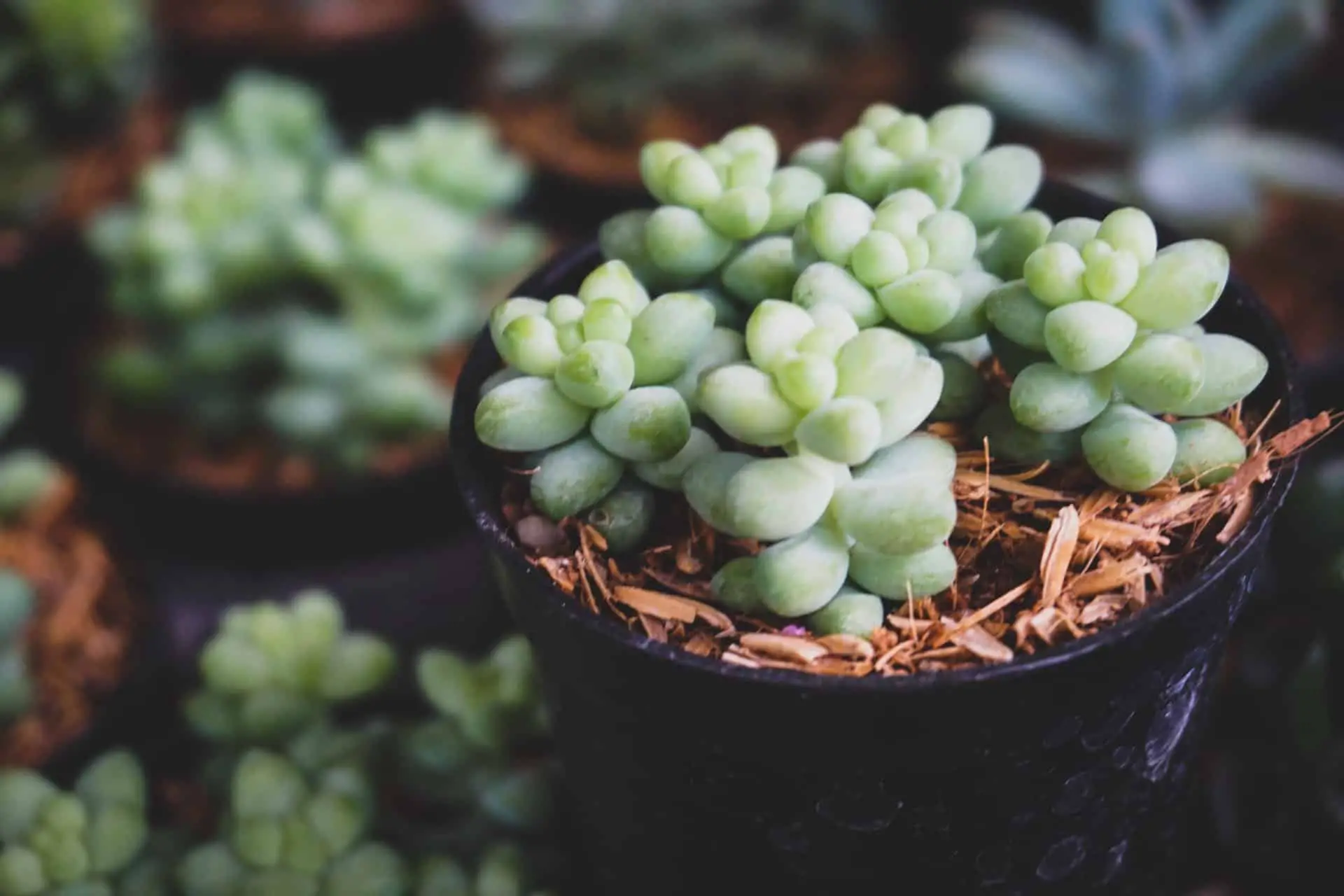

There is no doubt that succulents are plants that attract millions of people around the world. Many of them are small, so they can be grown in pots. But although we have been told for years that they are extremely easy to care for, this is only the case if we know their needs.
Because yes, in your area they may not need much attention, but in others, on the other hand, they may have complicated maintenance. That’s why I am going to give you a series of tips to take good care of your potted succulents.
Choose pots with holes in their base
Forget about those that do not have any holes. Succulents (ie cacti and succulents) are not aquatic plants because their roots cannot withstand waterlogging. If you plant them in a pot without drainage holes, sooner or later they will die. since the water will remain stagnant, unable to come out, next to the root system.
And if, the same will happen if you put a plate under them that you never drain. That is to say: it is not enough to choose a pot with holes, but it is also vital for the plant that the water that is not absorbed can escape and move away from the roots so that the soil can dry out.
Transplant your succulents when necessary


It is common for succulents to be bought – I insist, both cacti and succulents – one day and to keep them in the same pot for a long time (years). Although It is true that there are many that do not need a transplant, and others that only need it once or twice in their lives, there are others that will have to be planted in larger pots more frequently.like the Aeonium, the Echinocactus, the Adenium, all the columnar cacti like the Trichocereus and many, many more.
But how do you know if the plant requires a change? Well, the fastest way is by looking at the drainage holes in the pot. And it is that if the roots come out, without a doubt it is that it is running out of space. But this is not always so easy, especially when the substrate tends to compact when completely dry.
So, To get out of doubt, I recommend doing the following:
- With one hand, hold the pot from below, and with the other the plant by the base.
- Now, carefully, slightly extract the plant from the container. I repeat: a little, not quite.
- While you’re doing it, see if the soil crumble or not: if it does NOT, that is, if it stays intact, then the succulent needs a bigger pot; on the other hand, if it starts to fall apart, you will not have to transplant it yet.
the transplant It has to be done as soon as the good weather has settled and the frosts are behind us.. This can be in early, mid, or late spring. Everything will depend on the area in which we are.
And as for the pot, in addition to having holes in the base, it should be about five centimeters (more or less) larger in diameter and taller than the one you are currently using.
Put a suitable substrate for them
Not any substrate is worth it. Succulents do not resist waterlogging, and they have problems growing in those soils that are very heavy and compact.. This is why I recommend putting soil for cacti and succulents, since this is the only one that will allow them to be really well.
In the event that this cannot be achieved, a good alternative would be to mix black peat and perlite in equal parts. In this way, your plants will feel comfortable in that pot.
Make sure the soil is dry before watering again.


Irrigation has to be done only when necessary, that is, only when the soil or substrate is dry. I like to emphasize that succulents, the vast majority of them, withstand drought better than excess moisture; in fact, it may be enough to water them more than necessary on one occasion for them to start to rot.
For this reason, it is very important to see if they really need irrigation. And this is done by inserting a stick into the pot and see if it comes out clean when it is removed (in which case it would water), or not. But also, every time you water it, you have to pour water until the whole earth is soaked. What I mean by this is that, if the plant is large, it will not be enough to take half a glass. You always have to add the amount of water that each succulent needs, depending on its size and that of the pot.
That they do not lack light
The last and no less important advice (in fact, I would say that it is one of the most important) is the following: put your succulents in an area where there is a lot of light. And be careful: I’m talking about natural light, the Sun. The vast majority need to be exposed to direct sunlight to grow well., like the Lithops, the Aeonium, the Echinocactus, and many more. Others are tolerant of some shade, such as Haworthia or Gasteria, but even they will have trouble growing well in dim light.
However, It must be taken into account that if they have never been directly exposed to the sun before, if they are put on without having used them before, they will burn.. That is why you have to be patient and expose them little by little.
With these tips, you will be able to keep your succulents in pots for a long time.


7 thoughts on “Tips for caring for potted succulents”